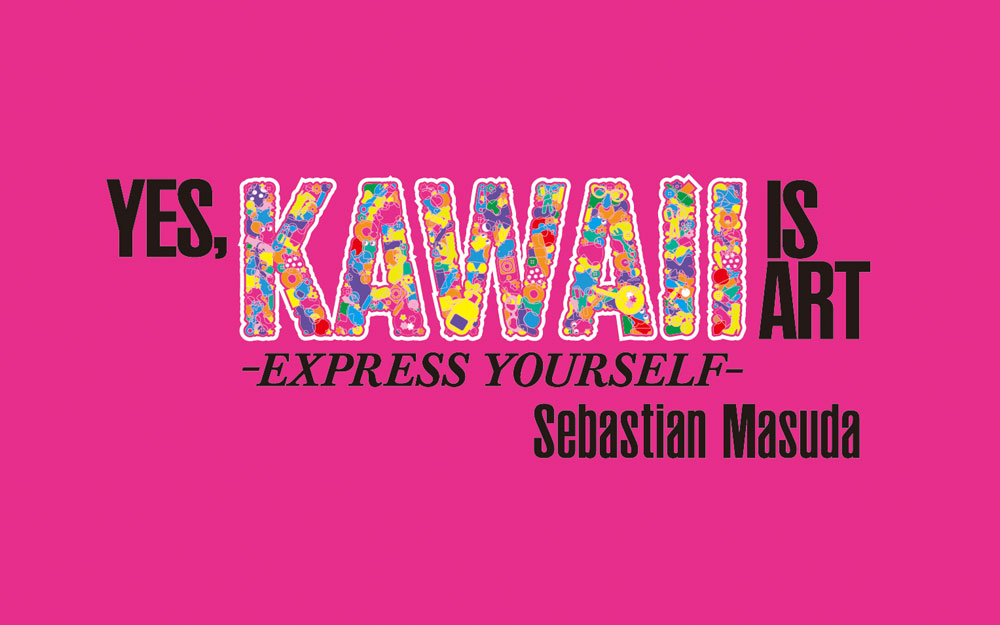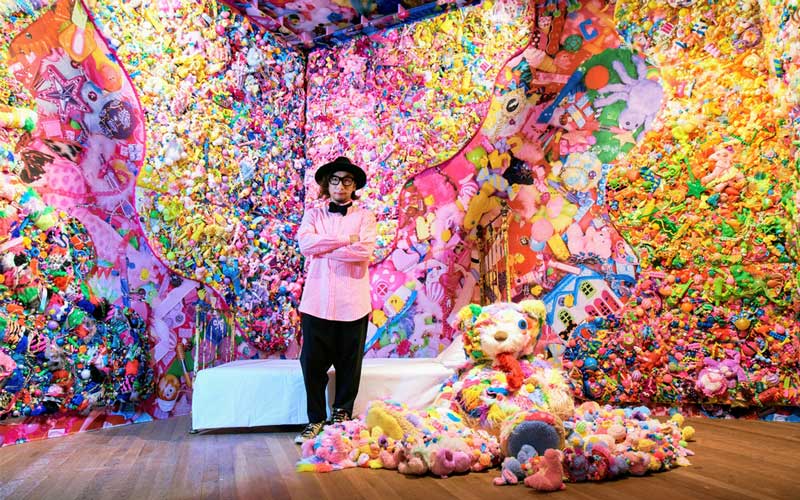
Artist Statement
What do you think when you hear the word, ‘Kawaii’?
The loveliness or cuteness of small things? Kitschy, colorful, childlike design or fashion? In common usage, the word kawaii might refer to these representations. However, what underlies kawaii goes beyond its aesthetic, or fashion, and stems from a strong sense of individual spirit that involves questioning social norms and embracing a philosophy of cherishing what one loves.
“The world will end in 1999.” Back when this end-of-the-century theory was given credibility, I was in my twenties and part of the so-called new generation. I’d lost my confidence from being criticized for creating cute, colorful, and punk works in rebellion against a sterile, black-and-white world and a future conquered by machines depicted by the older generation. So, I moved my operations to Harajuku and started my own experimental shop, 6%DOKIDOKI. The concept of this venture was “Sensational Lovely” (Kawaii). By 1995, young designers, ravers, singers, and performers began to gather in my shop, and a new movement in fashion and art started to emerge. The colorful expressions created by this group of like-minded people, who had escaped from an adult-dominated world, represented the creativity of Harajuku and became synonymous with kawaii, eventually spreading worldwide via the Internet and social media.
Since 2009, I have created ongoing opportunities to hear the voices of the global kawaii community, which despite the disruption of COVID-19 in 2020, continues to expand, transcending race, religion, age, gender, and national borders. I can attest that kawaii isn’t just an escape for young people, but a means to love oneself and express one's identity. Its current evolution recalls those early days in Harajuku, a place where one can be free.
Upon immigrating to America, the so-called “land of the free,” in 2023, I witnessed economic disparity, looting, societal disconnection, struggles with unequal access to educational opportunities, and discrimination based on race, gender, and sexuality.
In response to these difficulties, members of the kawaii community told me, “Kawaii is the best medicine to keep me sane;” “Because of kawaii, I can keep living.” These words still linger in my mind.
Thank you for attending “Yes, Kawaii Is Art -EXPRESS YOURSELF-”. I hope you'll feel the spirituality and aesthetic of kawaii and perhaps discover the previously concealed driving forces of the global kawaii community. If you have any questions or thoughts, please share them with me.
I’d like to express my gratitude to everyone at JAPAN HOUSE Los Angeles for making this exhibition possible. I’m proud that it has come to fruition as a result of our continued conversations.
Sebastian Masuda, 2024


